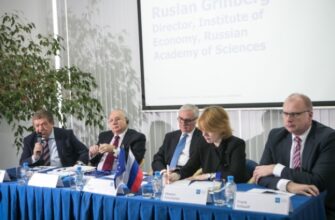Success of the enterprise activity is determined by generally economy in many respects. State of the economy influence cost of resources and consumer power, opens up conditions for company’s development or serves as obstacle.
Particularly serious impact concerns enterprises in an uncertain economic environment. So inflation, volatility in oil prices and, as a result, currency fluctuations affect the expenditure rate of enterprises and require budget revision. The decline in personal income reduces the demand for products and causes the need to revise companies’ sales plans.
GDP and industrial production levels, international trade illustrate the level of the country’s economy development and reflect the quality of business environment (opening new businesses or their closure, production level, population employment ratio and income of population).
Taking into consideration these factors allows companies to assess the economic situation in the country and to predict how these processes will develop in future.
An analysis of the current economic situation and making forecasts enables companies to develop adequate policies, which ensure the achievement of their aims.
The consensus Russia forecast 2015
| Brent oil price, USD/barrel | 59.4 |
| Dollar rate, RUR/USD | 61.4 |
| Consumer price index | 12.9% |
| GDP | -3.48% |
| Index of industrial production | -1.6% |
| Retail trade turnover | -7.6% |
| Real wages | -9.4% |
| Real disposable household incomes | -6.9% |
| Import | -29.2% |
| Export | +1.3% |
Macroeconomics is the science studying mechanisms of national economy functioning, the economy of the country as a whole.
The objective of macroeconomics is to determine how the country’s economy operates, to analyze conditions, factors and results of its development. A system of macroeconomic indicators used for descriptions of macroeconomic processes includes:
- Oil price is the cost of oil futures, i.e. cost of contracts that determines future oil prices. World crude oil prices impact on national revenue, trade balance, the oil and gas sector and related sectors of Russian economy development.
- Dollar exchange rate is an indicator of the level of convertibility of national currency. It describes competitiveness of the national economy against others.
- Consumer price index is an indicator, which characterizes changes in time in the general level of prices and tariffs for goods and services purchased by households for non-productive consumption. The index is used to assess the development of prices for goods, analyze and forecast price processes in economy, etc.
- Gross domestic product (GDP) is the main indicator of economic development. It consists of the value of goods and services produced in the country during a specified period. This indicator is used to measure the level of the country’s productivity.
- The industrial production index is the indicator of dynamics of industrial production of the country; is a part of GDP and describes change in GDP caused by development of fundamental industries.
- Retail trade turnover is the cost of goods sold to population for cash for private consumption. The analysis of this rate makes it possible to define conditions under which the ration between the supply and demand is formed on the market.
- Real disposable household incomes are incomes of the population less obligatory payments and adjusted for the consumer price index.
- Real wages is an indicator that characterizes the standard of living of the population and describes the quantity of material and spiritual wealth, which can be purchased with nominal income (wages, pensions, dividends), i.e. this indicator determines the purchasing power of population.
- The foreign trade turnover (incl. export, import) is a total sum of export and import of the country over a period of time (in monetary terms). The foreign trade turnover characterizes the openness of the economy, i.e. the degree of its involvement in the global economy.




